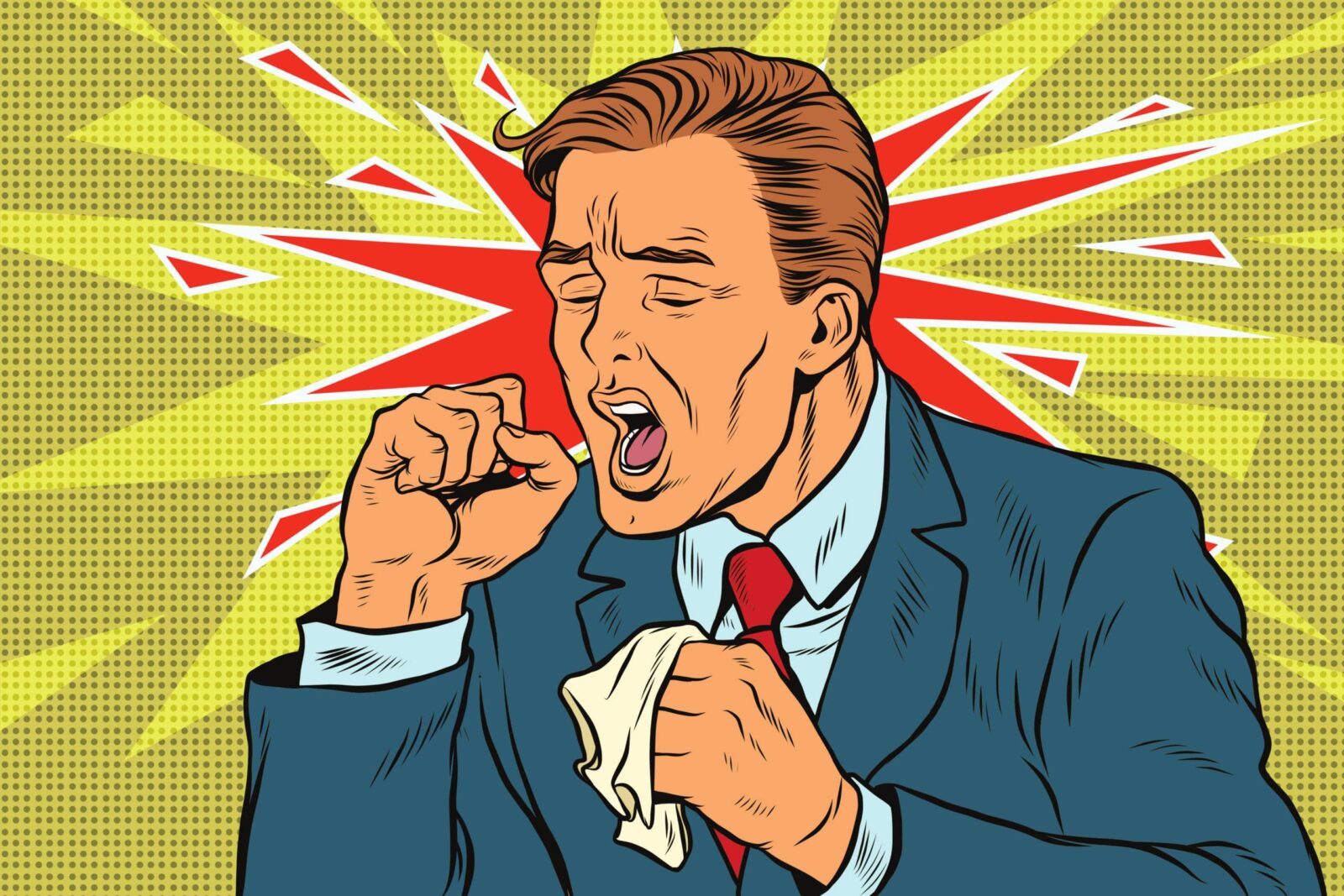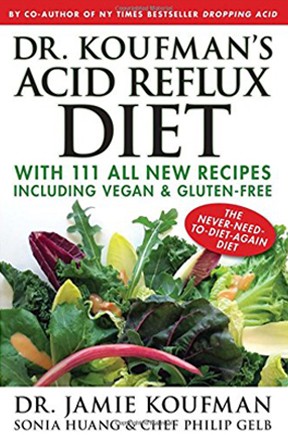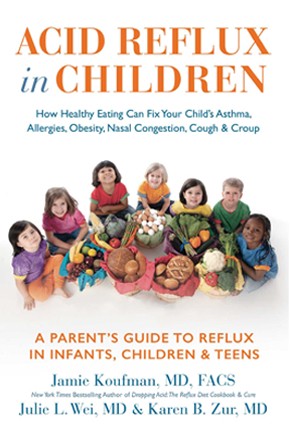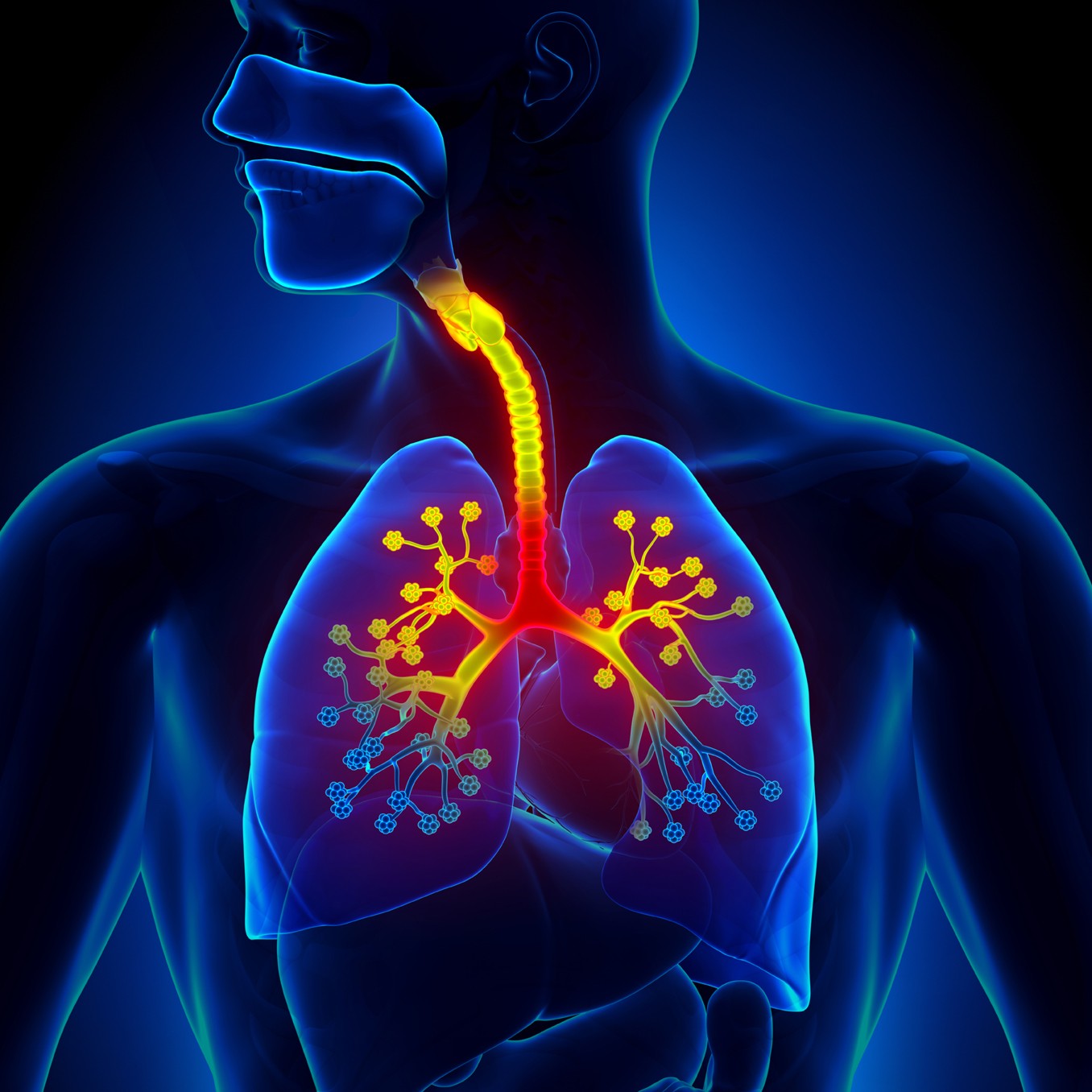
What Causes Choking? What Is Reactive Airway Disease?
At-A-Glance
- There are several different causes for what people call “choking.” Each one has different symptoms and medical significance; and while this article touches on café coronary and aspiration, its primary focus is the most common cause of choking, Reactive Airway Disease caused by acid reflux.
- Café Coronary (Life-Threatening Airway Obstruction). When people think of “choking,” they may think of accidental sudden death occurring during a meal due to airway obstruction. This can happen when food gets stuck in the esophagus and compresses the trachea (windpipe). This is always a medical emergency, and a Heimlich maneuver should be performed to dislodge the obstruction.
- Aspiration, another type of “choking,” occurs when food, beverages, saliva or gastric reflux inadvertently (or silently during sleep) “goes down the wrong pipe” into the trachea and lungs. Following an aspiration event, violent coughing and choking can occur. This can damage the lungs. In the elderly, nighttime reflux aspiration events can cause severe pneumonia leading to death.
- Reactive Airway Disease (RAD), usually related to acid reflux, is a medical term used for respiratory compromise due to “reaction” of the airway to an irritant, toxin, or stomach acid. The mechanism of RAD is inappropriate closure of the vocal cords, causing wheezing, stridor, and shortness of breath. RAD has three patterns: asthma, laryngospasm and paradoxical vocal cord movement.
- Asthma is always associated with difficulty getting air OUT of the lungs (during exhalation); whereas, RAD (sometimes called pseudo-asthma) is associated with difficulty getting air IN (during inhalation). RAD attacks are frightening, but they are usually self-limited and usually not life-threatening.
The focus of this post is reactive airway disease (RAD), choking episodes caused by acid reflux. Stomach acid can trigger choking by acutely altering airway physiology by closing the vocal cords (during inhalation) that may restrict breathing. At the bottom of this post are sections on aspiration and the café coronary, two other important causes of choking.
What Is Reactive Airway Disease (RAD)? Asthma vs. Pseudo-Asthma
What Is Asthma? Asthma is the second most common RAD, affecting 25 million Americans. Asthma attacks are triggered by infections, allergies, noxious chemicals, and by acid reflux. Its hallmark symptoms are shortness of breath and difficulty getting air OUT of the lungs, during exhalation.
The mechanism of the attack, trouble getting the air out of the lungs, is swelling and constriction of the bronchial tubes (big airways) within the lung to the extent that the air in the lungs is trapped, that is, it has to be forced out through the swollen, narrowed airways. Note: Asthma Is Always Difficulty Getting Air OUT of the Lungs.
It is important to note that reflux is an asthma trigger in more than 70% of people who actually have it. Indeed, it is likely that reflux and asthma are companions for most asthmatics. And for most people with RAD (other than asthma i.e., pseudo-asthma), reflux is the cause.
What Is Pseudo-Asthma? Supposedly, 25 million Americans — 8% of adults and 7% of children — have asthma. But do they really? In my practice, over a period of 40 years, I have seen hundreds of patients who have been diagnosed with “asthma.” But when asked, “During an asthma attack, do you have more trouble getting air IN or OUT?” More than 80% said IN, and that is not asthma!
Trouble breathing IN is almost always due to acid reflux, and the two patterns are laryngospasm and paradoxical vocal cord movement (PVCM). In both of those — which may overlap — there is difficulty with inhalation, getting air IN, accompanied by shortness of breath and sometimes violent coughing.
What Is Laryngospasm? Laryngospasm is the most common type of RAD; almost everyone has had it at least once. In those cases, it can also occur with inadvertent aspiration of a food or beverage during eating; and yes, acidic items are more likely to cause laryngospasm. This type choking usually only lasts a few seconds. Less than a minute.
Have you ever awakened in the middle of the night coughing and gasping for air like a fish out of water … and perhaps crowing loudly with each restricted inhalation? The noisy breathing is called stridor, and inspiratory stridor is what happens during an attack of laryngospasm. The word laryngo-spasm translates as laryngeal (vocal cord) spasm.
What Is the mechanism of laryngospasm? In the upper part of the larynx (voice box), there are acid receptors, and those receptors are like a switches that close the vocal cords when acid (pH <2.5) comes in contact with them. Presumably, this happens to protect the lungs from reflux aspiration.
Laryngospasm is terrifying because it is almost impossible to get air enough into the lungs through the closed vocal cords. Nevertheless, you can’t die from it; the spasms usually break within seconds-to-a-minute or so. If you get laryngospasm, keep calm, breathe slowly, and try to sniff sharply in through your nose, a maneuver is hard-wired as a reflex to open the vocal cords.
BTW, it is also possible that reflux-caused laryngospasm may be a cause of SIDS (sudden infant death syndrome).
What Is Paradoxical Vocal Cord Movement (PVCM)? During normal breathing, there is “phasic” movement of the vocal cords; they open partially during inhalation and close partially during exhalation. This makes sense as more space through which to inhale is good, and a slight dampening of breathing during exhalation is also good as it keeps some positive pressure in the lungs, helping to prevent collapse of alveoli.
With PVCM, the vocal cords close during inhalation, restricting breathing. Wile the most common cause of this is reflux, other causes include respiratory-type laryngeal dystonia and brainstem abnormalities; see PVCM article.
PVCM is much misunderstood by the medical mainstream because of its failure to diagnose and treat respiratory reflux (LPR). A lot of attention is focused on respiratory retraining, which can help some people; however, reflux control is the best and most important treatment that can result in “curing” PCVM.
In the medical literature, there also is a common term, vocal cord dysfunction (VCD). This is PVCM “diagnosed” by a physician who is unable to examine the larynx. In other words, VCD is a “waste basket” diagnosis for trouble breathing IN. If you are diagnosed with VCD, you need to see an otolaryngologist (ENT doctor) who can examine your throat with a special scope, ideally during an attack.
What Is Aspiration and What Causes It?
The word aspiration means action of breathing into; however, its medical meaning relates to anything foreign accidentally entering the airway and lungs. Of course, foreign material (e.g. food, foreign body, saliva, refluxate) can enter the trachea through the vocal cords even if it not inhaled; anything falling through/between the vocal cords can enter the airway.
It is also possible to aspirate a foreign body e.g., small plastic toy, peanut. In such cases if the foreign body is not promptly coughed out, it must be removed by an otolaryngologist, sometimes most safely in the operating room under general anesthesia.
What is aspiration pneumonia? For people who have recurrent pneumonia, nocturnal reflux aspiration events may be responsible. Anti-reflux treatment such as recommended in Silent Reflux is the best prevention. Indeed, reflux aspiration occurring during sleep is the big X-factor in people who have pneumonia without symptoms of a prior viral illness, especially those with recurrent pneumonia.
It is interesting that so many elderly people in nursing homes die of community-acquired pneumonia. “Community-acquired” implies that no pathologic organism (bacteria) was identified. Here’s what I think: give an elderly refluxer a bedtime snack, say chocolate pudding and ginger ale, for instance, and that’s what ends up in their lungs at two o’clock in the morning. They die of chocolate-pudding–ginger-ale pneumonia.
What Is a Café Coronary?
Fatal choking on food is sometimes called a café coronary because to the on-looker, it may seem that the victim is having a heart attack. No observable breathing with or without sudden collapse, usually because a large chunk of food, often steak, gets lodged in the upper esophagus; and since there is a soft common wall between the esophagus and the trachea (windpipe), the stuck food can compress and obstruct the windpipe.
While the café coronary is more common in people who are edentulous (no teeth) and/or mentally challenged — it occurs mostly in the elderly and young children — it can happen to anyone who eats too-much, too-fast, without chewing. Learn the Heimlich maneuver by watching the video, and maybe someday you’ll save a life!
Tracheal obstruction is always life-threatening and if the Heimlich maneuver is unsuccessful, some other urgent intervention such as emergency tracheotomy in urgently needed. In my lifetime, I’ve performed two life-saving Emergency Cricothyrotomy procedures in the field.










